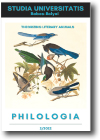LIONS AND SHE-WOLVES: KINGSHIP, QUEENSHIP AND THE LEGITIMACY OF POWER IN SHAKESPEARE’S HISTORICAL PLAYS
LIONS AND SHE-WOLVES: KINGSHIP, QUEENSHIP AND THE LEGITIMACY OF POWER IN SHAKESPEARE’S HISTORICAL PLAYS
Author(s): Dana Percec, Andreea ŞerbanSubject(s): British Literature
Published by: Studia Universitatis Babes-Bolyai
Keywords: animal imagery; gender relations; historical plays; kingship; legitimacy; queenship; power; Shakespeare;
Summary/Abstract: Lions and She-Wolves: Kingship, Queenship and the Legitimacy of Power in Shakespeare’s Historical Plays. A recent collection of studies about Shakespeare and animals (Raber and Dugan 2021) cogently points out that the playwright’s bestiary is so charged symbolically and metaphorically that these nonhuman creatures rarely speak for themselves. However, the benefit of (Shakespeare’s) animal studies lies in the intersectional framework, specifically, for the purposes of this paper, the discussion about the structures of power and subjugation with the combined tools of gender studies and animal studies, as theorized a few decades ago by Adams and Donovan (1995). Starting from the shared scope of these areas of research, the present paper discusses gender relations and the stratification of power described in Shakespeare’s historical plays by means of a quantitative and qualitative analysis of specific animal imagery. While the lion is a recurrent symbolic animal evoked in these plays with reference to kingship, bearing positive connotations of legitimate power, he is often contrasted with the wolf, symbolizing usurpation, misrule, lack of legitimate authority. The she-wolf, although mentioned only once, is evoked in order to suggest an equally stark contrast, between male (and native) kingship and female (and foreign) queenship. Drawing on Elizabeth Norton’s (2009) and Helen Castor’s (2011) use of this animal phrase to address the relevance of female sovereignty in medieval and early modern England, our paper discusses how the choice of animals and the number of occurrences in Shakespeare’s Henriad reflects the early modern perceptions about (monstrous) female rule.
Journal: Studia Universitatis Babes-Bolyai - Philologia
- Issue Year: 67/2022
- Issue No: 2
- Page Range: 169-189
- Page Count: 21
- Language: English

